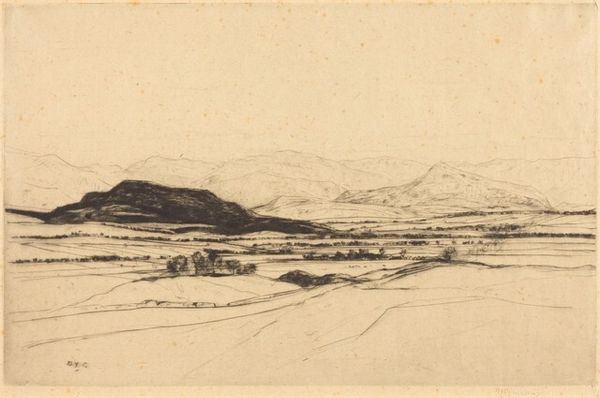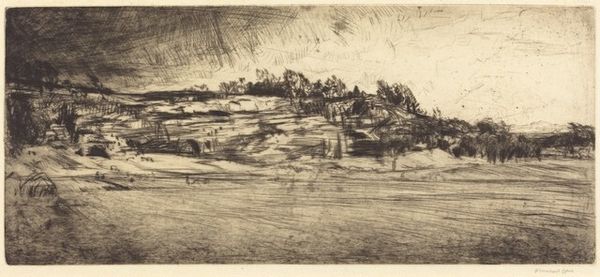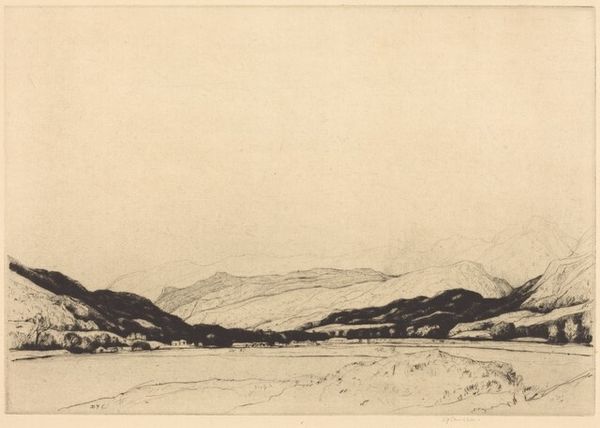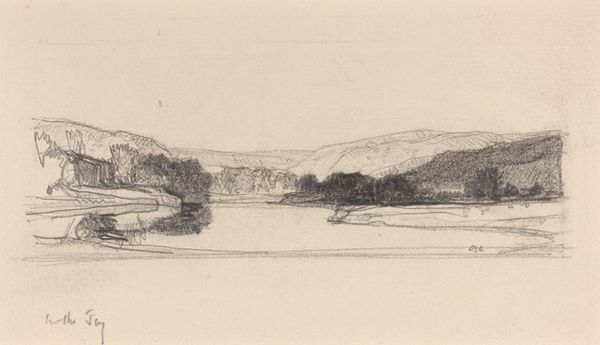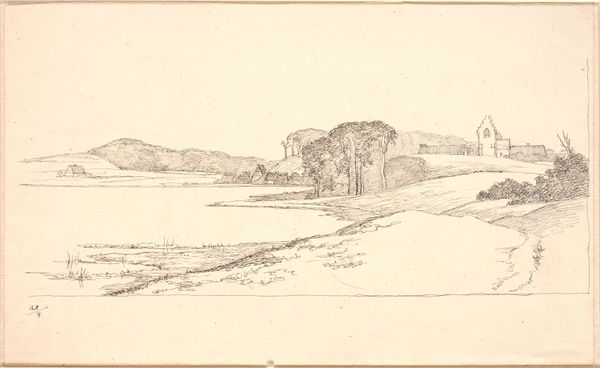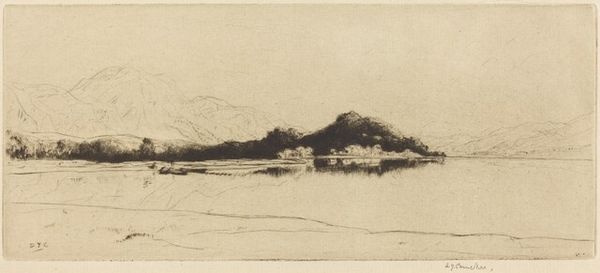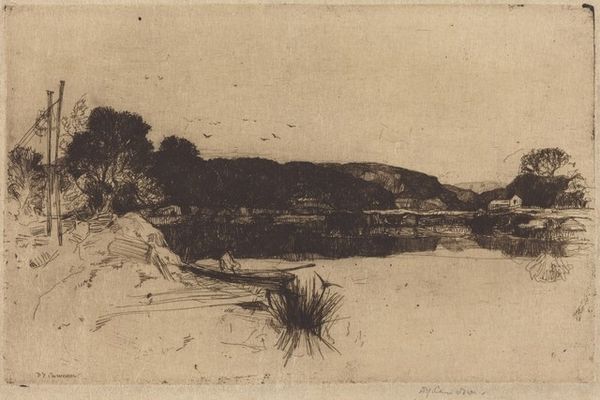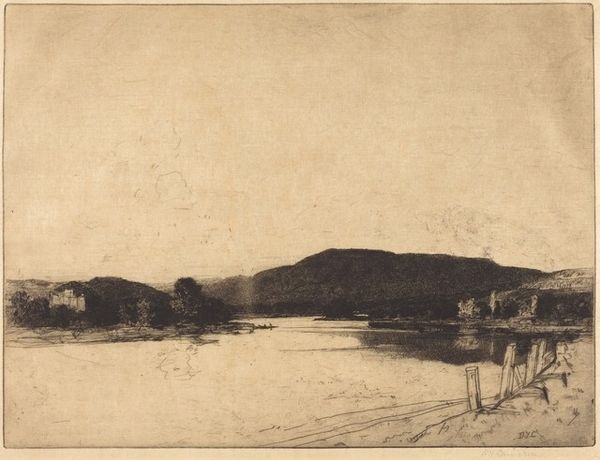
Copyright: National Gallery of Art: CC0 1.0
Curator: Looking at David Young Cameron's etching, "Strathearn," created in 1917, I am struck by the incredible skill used to depict this tranquil landscape using graphite on, in this case, a print. Editor: It does evoke a sense of calm, doesn't it? A wistful moodiness almost washes over me looking at it. The composition feels very deliberate, leading your eye across the water toward that distant horizon. I’m intrigued by the materials used; it appears like drawing and I am curious as to how Cameron came to print it. Curator: Exactly. The printmaking process Cameron employed here would have been crucial. Etching allows for a remarkably fine line, creating a level of detail rarely seen in prints of this scale and size. Also to consider is that printmaking at the time would require one, or more, to be dedicated to the task itself - from the engraver to the printer, this would be an operation with divisions of labour in place. Editor: Considering it was made during World War I, its contemplative atmosphere is quite poignant. It feels divorced from the realities of the war, almost idealized. I wonder how the contemporary audience perceived this contrast? Curator: It would probably be worth examining the market demand and print collecting activities to assess the piece’s accessibility, circulation, and reception within elite art circles, potentially reinforcing traditional aesthetic values amidst social upheaval. It could be telling, as well, that the printmaking resurgence came from the easily reproduced image that allowed artists to distribute work further and easier than painting did. Editor: It certainly raises interesting questions about the role of landscape art during such times, its function as a form of escapism, perhaps? Or maybe even as a subtle reminder of what was worth fighting for? A cultural identity rooted in the land? Curator: Or perhaps its cultural purpose should not be that deep? Instead of using it for capital gain or ideological value, could its cultural use-value just be as a hobbyist item for an upper-middle-class clientele looking for new interior decorations to affirm social status? Editor: That's a refreshing reminder to not always assume profound motives. Even artistic choices boil down to economy in many ways. I now look at it less as an idealized scene, but more as an object intended to affirm the status quo. Thank you. Curator: Indeed. Thinking about the print as a commercial artifact allows us to look at the more hidden power dynamics.
Comments
No comments
Be the first to comment and join the conversation on the ultimate creative platform.




